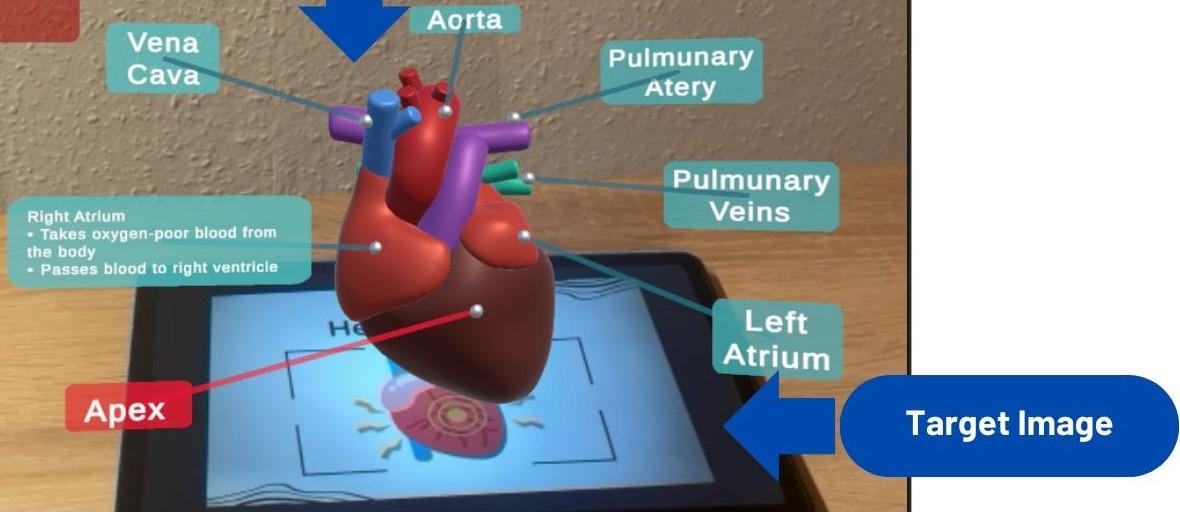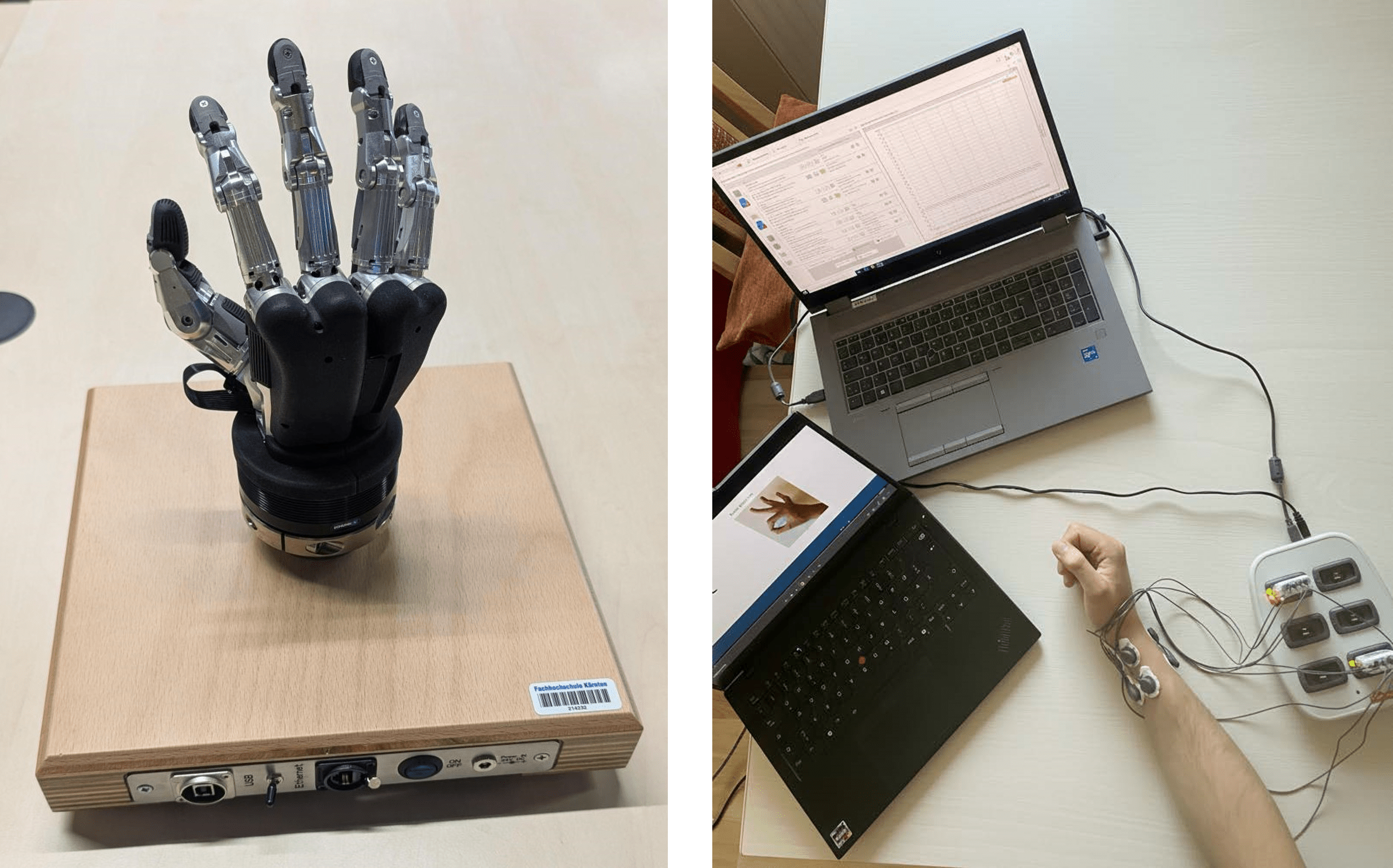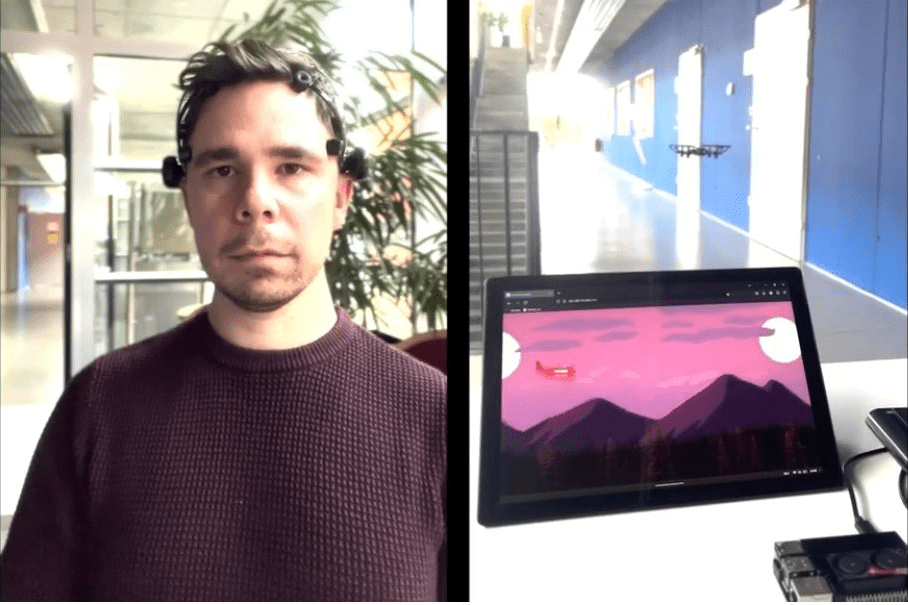The topic of augmented and virtual reality represents one of the main fields of focus of our Master’s program in “Medical Engineering & Analytics”. In this post, we will look at the project of Mr Jamal, Mr Eichleitner, and Mr Sabouri, for the lecture “Augmented Visualization in Medicine”.
Yours,
MedTech @ FH Kärnten Team
As a final project for the lecture, we created the 3D minigame “Skull & Bones” using Unity.
In the game, the player takes control of a 3D-rendered heart and finds themselves in a surgical room with a large skeleton right in front of them. The goal is to climb up on platforms and the skeleton to touch as many bones as possible within the given timeframe. Depending on the score of “touched bones”, the player will be ranked.
The goal of our project was to create a fun way to memorize the bones of the human body. Each contact with a bone displays the name and the Latin term for it. The name is shown for only a few seconds, while the player is occupied with not falling down. However, by repeatedly playing the game, the subconscious will remember the bone names more and more.
To achieve maximum replayability, we tried not to let the educational character overpower the fun aspects. Of course, the game also needed to be challenging. Therefore, we deliberately chose a heart as a player character due to its irregular shape, making the movement not perfectly foreseeable. The bones jumped on have irregular shapes too, making the danger of falling always imminent. Additionally, the physics of the game was adjusted to have different types of friction depending on the material, as well as optimized gravity.
The 3D models of the heart, skeleton, and surgical room inventory we found online under a Creative Commons license, however, we had to highly alter, segment and optimize the models in Blender to ensure the game runs smoothly. We also created self-made custom PBR materials and optimized mesh colliders, as well as a 3D-rendered opening scene animation. A total of 68 unique bones are segmented and touchable, representing the majority of bones in the body (accounting for not differentiating between left/right mirrored bones).
Unfortunately, the limited scope as a student project and a due deadline hindered the introduction of additional features, such as animations of the skeleton or even porting the game to a VR experience. Discussing the potential of future development of the game, we collectively agreed on: “Maybe at some point in the future. Let’s see.”
The game can be downloaded below for Windows. Can you beat your own high score? (controls: WASD to roll, SPACE to jump)
https://www.dropbox.com/scl/fi/oiv194q2vosdscus6v2y9/SkullAndBones_v1.0.zip?rlkey=1rgsv5cjwj4q0irnvt8biks74&dl=0
References:
3D Heart model © rbproduction160: https://skfb.ly/oJusI
3D Skeleton model © J1G4R: https://skfb.ly/oPXFR
3D Operating Room Inventory models © ChrisRE: https://skfb.ly/oCTvA



